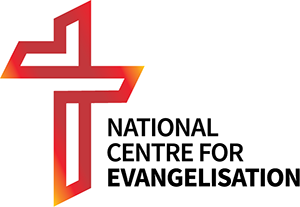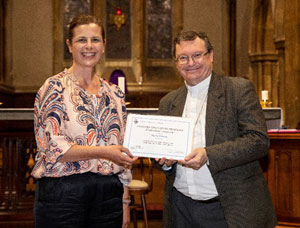 In 2018, the parishioners of Sacred Heart Parish Hindmarsh-Findon in Adelaide were advised that although their parish would continue to exist, they would not have a resident priest for the foreseeable future — if at all. Suddenly, it was up to the parishioners to plot their way forward in uncharted waters. How would they manage it?
In 2018, the parishioners of Sacred Heart Parish Hindmarsh-Findon in Adelaide were advised that although their parish would continue to exist, they would not have a resident priest for the foreseeable future — if at all. Suddenly, it was up to the parishioners to plot their way forward in uncharted waters. How would they manage it?
Sacred Heart Parish is located about 5km from Adelaide’s CBD. For more than 100 years it was under the care of the Missionaries of the Sacred Heart until their departure in 2019. It is a large parish comprising two Mass centres with various eucharistic communities, including five parish schools over six campuses.
Once it became clear that the archdiocese had no desire to close or amalgamate the parish, a transition team was established. Narita Perrotta, mother of four, grandmother of one, a convert to the faith with post-graduate qualifications in leadership and theology, was appointed the parish pastoral co-ordinator. Together with the parish pastoral council chair, Mary Hemmings, representatives from the schools and parish communities and the parish administrator, they embarked on a new way of being parish.
Hindmarsh-Findon parish has a large multicultural population as well as many people born and bred in the local area. The idea of not having a priest in residence made many parishioners quite nervous. However, both Narita and Mary emphasised that, through intentional collaboration and constant communication, this time of transition empowered parishioners to look at the gifts they had and to offer them up for the good of the community. Narita says that there was a lot of “gentle nurturing” and a great desire to bring as many people as they could on the journey.
Then, 13 months ago, much to the joy of the parish, the Archdiocese appointed Fr Lancy D’Silva CSC from the Congregation of Holy Cross[1] as the parish priest. This was Fr Lancy’s first appointment in Australia, having come from India via the United States. As a priest for almost 18 years, he was quite surprised by the low number of Catholics who attended Mass. However, it did not take him long to discover the “beautiful and vibrant community” that God had brought him to, and that his ministry in Australia was to be different to that of India, and even the US.
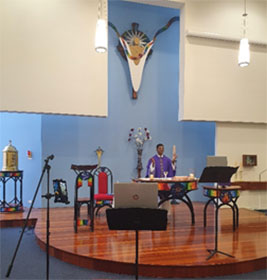 A significant difference for Fr Lancy was the emergence of a different way of doing parish leadership. As the parish had already been led for some time by Narita, a stronger sense of co-responsible leadership was to develop.
A significant difference for Fr Lancy was the emergence of a different way of doing parish leadership. As the parish had already been led for some time by Narita, a stronger sense of co-responsible leadership was to develop.
I asked how this shared leadership looks in reality. Firstly, all agreed that “the buck stops with Fr Lancy” as he is the parish priest. However, on a day-to-day basis, Narita is involved heavily in all aspects of decision-making in the parish. Both Narita and Fr Lancy share responsibility for meeting with the bereaved, those preparing for marriage and those interested in becoming a Catholic. Narita attends most of the parish Masses and her face is recognised as a “go to” person, especially if Fr Lancy is busy with sacramental or liturgical ministry work.
Fr Lancy said that he could not believe how much pressure this has taken off him. He feels he can devote so much more time to pastoral visitation, homily preparation and attending to the spiritual needs of the large community. He sees the stress that many of his brother priests are under because they are trying to run parishes on their own and he acknowledges that his “burden has been lightened” because the shared responsibility in the parish is now “a reality and not a theory”. Fr Lancy believes co-responsible leadership is more sustainable and effective. It also acts as an example to the parishioners that it is not just the clergy who are responsible for the faith life of the community.
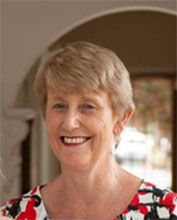 Mary Hemmings and other members of the parish have been delighted that Fr Lancy has been “very open” to this style of parish leadership. Mary, who spent 40 years in Catholic education in South Australia, has always been involved in parish life. She is a Covenant Josephite working closely with the Josephites in her local area and is chair of the international group of Josephite Companions. As the PPC chair, she supports Fr Lancy and Narita in their various ministries. One of her deep desires for the parish is to work out how the various small communities within the parish can stay connected with each other and how to “go out” into the wider community.
Mary Hemmings and other members of the parish have been delighted that Fr Lancy has been “very open” to this style of parish leadership. Mary, who spent 40 years in Catholic education in South Australia, has always been involved in parish life. She is a Covenant Josephite working closely with the Josephites in her local area and is chair of the international group of Josephite Companions. As the PPC chair, she supports Fr Lancy and Narita in their various ministries. One of her deep desires for the parish is to work out how the various small communities within the parish can stay connected with each other and how to “go out” into the wider community.
One way of going out into the community has been by placing a strong focus on sacramental preparation. With the support of Kathy Horan from the Archdiocesan Office for Worship, there has been prayerful and careful planning and strong communication with all those involved. As well, the parish is pouring much energy into meeting parents “where they are at”. Their program is parish-based, school-supported and family-centred. Because of COVID-19, parents had to meet in small groups, rather than the large gatherings that had been the normal way of delivering formation and information about the sacraments. The team received “positive unsolicited feedback” to this new approach as it proved to be a positive way of building community, allowing parents to get to know each other in a deeper way.
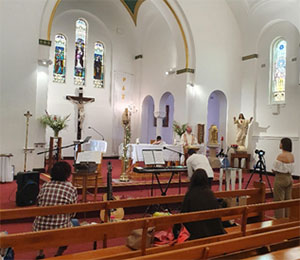 The parish has plans for the future. From a liturgical perspective, they have already started engaging more young people in the Mass. One initiative allows high-school students and young adults to share their thoughts on the Gospel, either through the bulletin or at some point during the Mass. Often the well-considered thoughts of a young person will complement or provide a different perspective to that delivered by Fr Lancy in his homily.
The parish has plans for the future. From a liturgical perspective, they have already started engaging more young people in the Mass. One initiative allows high-school students and young adults to share their thoughts on the Gospel, either through the bulletin or at some point during the Mass. Often the well-considered thoughts of a young person will complement or provide a different perspective to that delivered by Fr Lancy in his homily.
The parish has also seen the success of various “pub talks” throughout Australia. They are investigating how this concept, perhaps “café talks”, might be a way to be “out” in the community. Narita suggests that they must also find ways of ensuring parishioners continue to use their God-given gifts and not become complacent. The energy that was harnessed when they realised that they would have to keep the parish going without a resident priest, must not be lost.
Mary recalls the parting words of Fr Bill Brady MSC. Knowing that the parishioners were about to embark on a different way of being parish, he reminded them that their Baptism gives them the right and responsibility to proactively share the faith. Mary found these words very empowering and has encouraged others to continue reflecting on this.
The parishioners of Sacred Heart Parish Hindmarsh-Findon are being led by a team of people who have big hearts for the Gospel message. And each of them understands that, as baptised Catholics, they are all responsible for sharing the Good News of Jesus.
Words: Sharon Brewer
Images: Supplied by Hindmarsh-Findon Parish
Narita receives her Ministry Formation Program certificate from Archbishop Patrick O’Regan
Fr Lancy celebrates Easter Sunday Mass online Sacred Heart Church, Hindmarsh
Mary Hemmings
Online Mass from Our Lady of the Manger Church, Findon
